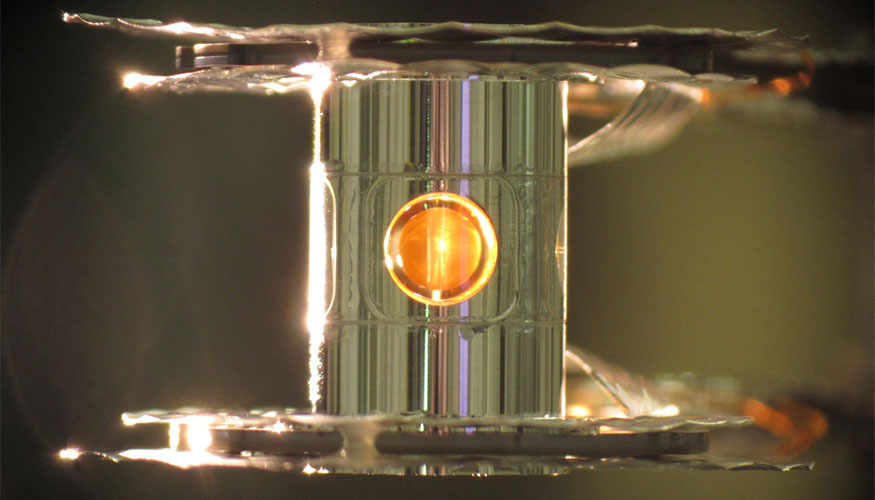Scientists achieve fuel gain exceeding unity in confined fusion implosion
February 13, 2014

In the NIF experiments,192 lasers deliver up to 1.9MJ of light into a gold hohlraum, a cylindrically shaped radiation cavity that converts the energy into X-rays. A series of steps then results in fusion. (Credit: Eduard Dewald/LLNL)
The milestone of achieving fuel gains greater than 1 has been reached at the Lawrence Livermore National Laboratory (LLNL) National Ignition Facility (NIF) — for the first time ever at any facility.
Ignition — the process of releasing fusion energy equal to or greater than the amount of energy used to confine the fuel — has long been considered the “holy grail” of inertial confinement fusion science.
A key step along the path to ignition is to have “fuel gains” greater than unity (1); that is, the energy generated through fusion reactions exceeds the amount of energy used to confine the fuel.
In a paper published in the Feb. 12 online issue of the journal Nature, scientists show an order of magnitude improvement in fusion yield performance over past experiments.
“What’s really exciting is that we are seeing a steadily increasing contribution to the yield coming from the boot-strapping process we call alpha-particle self-heating as we push the implosion a little harder each time,” said lead author Omar Hurricane.
Boot-strapping results when alpha particles, helium nuclei produced in the deuterium-tritium (DT) fusion process, deposit their energy in the DT fuel, rather than escaping. The alpha particles further heat the fuel, increasing the rate of fusion reactions, thus producing more alpha particles. This feedback process is the mechanism that leads to ignition.
“There is more work to do and physics problems that need to be addressed before we get to the end,” said Hurricane, “but our team is working to address all the challenges, and that’s what a scientific team thrives on.”
Los Alamos National Laboratory was also involved in the research.
Abstract of Nature paper
Ignition is needed to make fusion energy a viable alternative energy source, but has yet to be achieved. A key step on the way to ignition is to have the energy generated through fusion reactions in an inertially confined fusion plasma exceed the amount of energy deposited into the deuterium–tritium fusion fuel and hotspot during the implosion process, resulting in a fuel gain greater than unity. Here we report the achievement of fusion fuel gains exceeding unity on the US National Ignition Facility using a ‘high-foot’ implosion method, which is a manipulation of the laser pulse shape in a way that reduces instability in the implosion. These experiments show an order-of-magnitude improvement in yield performance over past deuterium–tritium implosion experiments. We also see a significant contribution to the yield from α-particle self-heating and evidence for the ‘bootstrapping’ required to accelerate the deuterium–tritium fusion burn to eventually ‘run away’ and ignite.